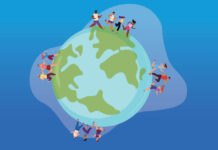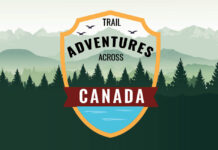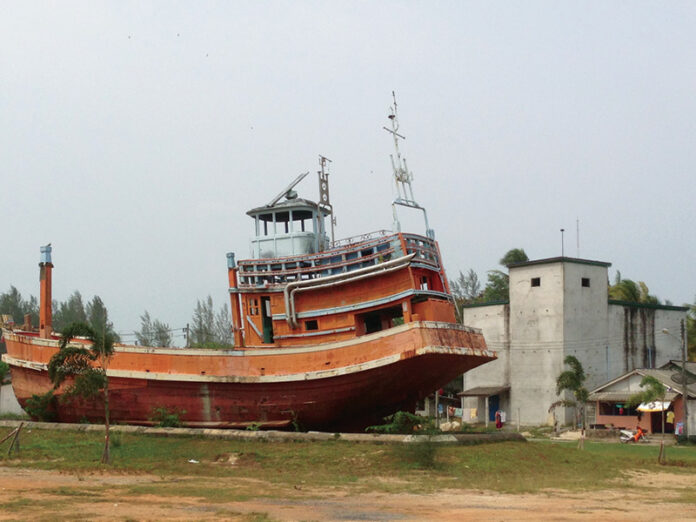
The brightness of the white canvas caught my eye as I wheeled around the corner on my bike, trying to keep up with our cycling leader, Pit, as we toured through the narrow roads of the tiny village of Bang Nai Si on Thailand’s west coast.
But there was something beyond the canvas — a story being told, emotions being displayed in full view to those who passed by. Too far ahead for him to hear my shout out to pause, I abandoned my thought of stopping and continued along. But the vision in my head never left.
It was 38C as we made our way up the black asphalt road through Khao Lak on a cycling tour of Thailand. Fronds of palm trees made a meek effort to shade us from the punishing sun. Head down, sweat dripping from my neck, hands burning from exposure on my handlebars, I focused on the ride. The things you see and absorb touring on a bicycle leave powerful, detailed impressions.
But then a boat, grounded two kilometres from the water, caught my eye. What was it doing landlocked so far from the sea? And then, another, bigger, boat, this one displaying a monument with a date. I could make out in English — December 26, 2004.
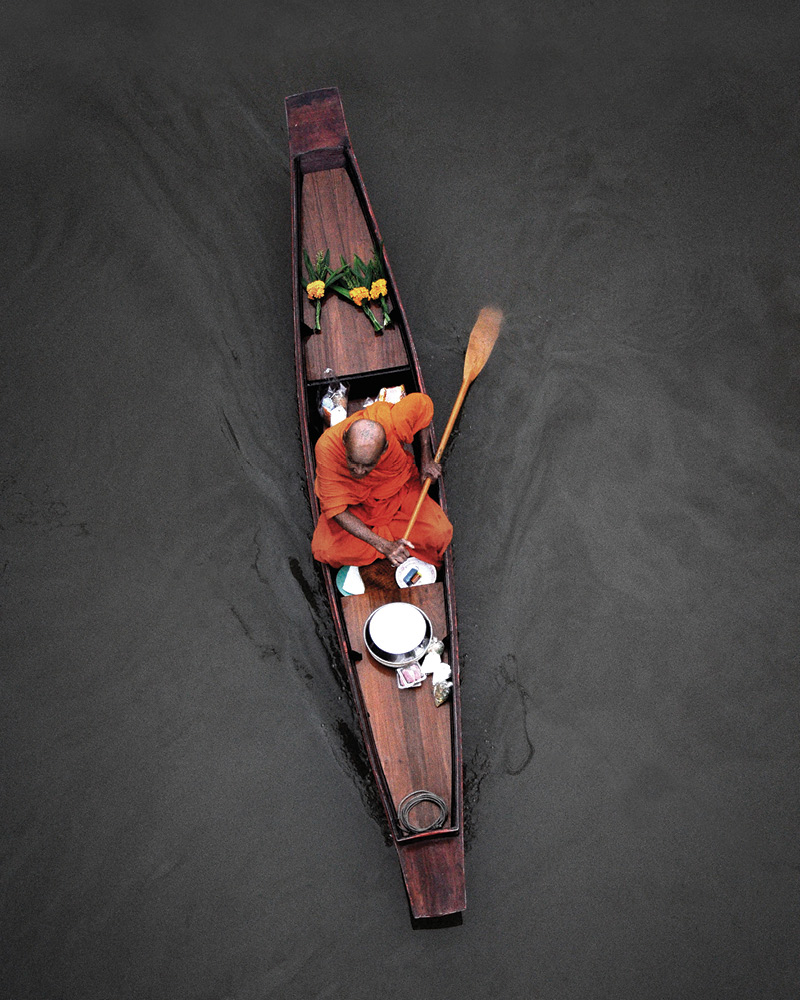
Photo: Tourism Authority of Thailand
I thought about the tragic Indian Ocean tsunami that took the lives of almost a quarter million people. The news had said it happened in Phuket, but we were 140K north of the resort village.
We steered our bikes off the main road, heading toward the water. Before us were boarded up hotels, land overgrown with weeds and long grass, houses long since abandoned.
People feared the giant wave, the unknown power of the sea that trespassed that day, stealing loved ones, making survivors afraid to return to their community. The lack of voices produced an eerie quietness that was penetrated only by the sound of our pedals revolving. We rode on, past posts marked only with a simple line and number, evidence of the height the watery monster had reached before receding to its murky home, taking along with it the joy and livelihoods of the people who had inhabited that land, leaving fear and sadness behind.
In silence, we wound back the way we had come, the roads taking on a new life. People in new houses and shopkeepers tending their wares revealed signs of hope.
Children called out “sawasdee” to the foreigners, daring to expose themselves to the sea while posing for a photo. I fell behind.
Which way had Pit gone? What road had he taken? Hesitating a brief moment, my gut said to veer left. As I turned the corner, it was not my friends, but the startling white canvas that again caught my attention. Slowing down, I popped off my bike to take a closer look.
A boy squatting, a giant wave looming over his head, cradling a house in his hands, crouching over, trying to shield the tiny house. As the young boy-turned-artist slowly made his way to me, I understood. And as he wrapped the canvas for me, we both knew our memories would never be forgotten.
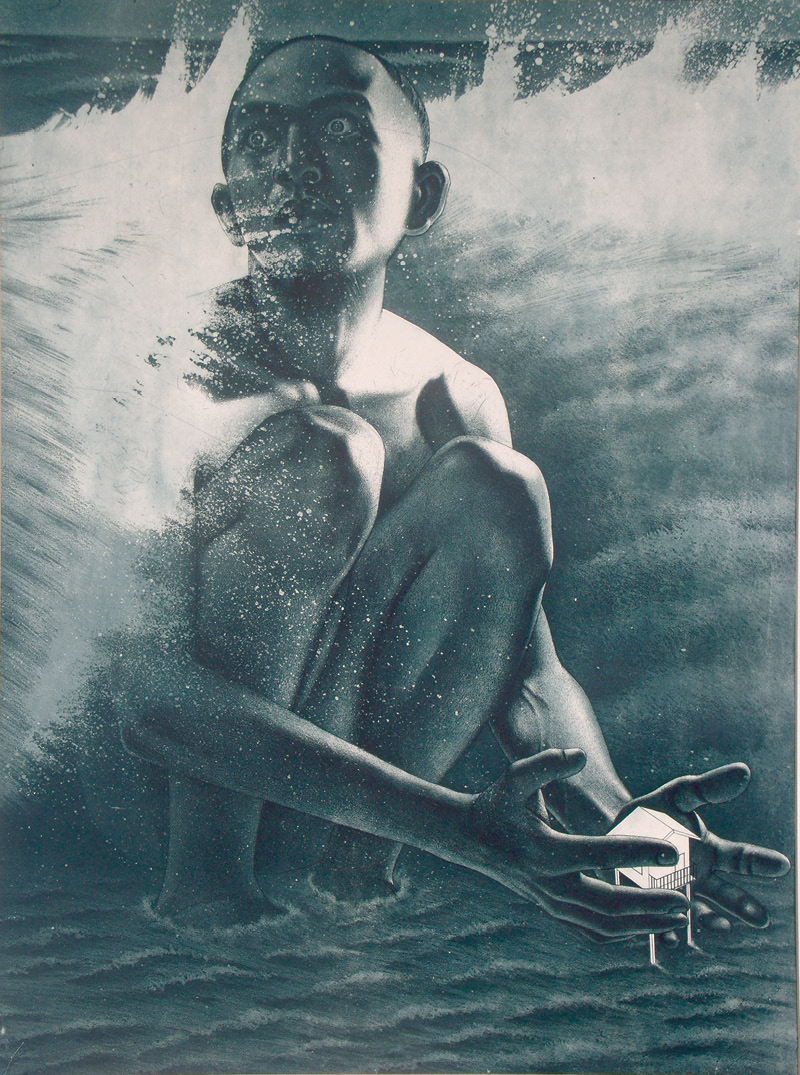
Painting by Jakrapong Thongsongsom
Explore Thailand
- Getting there: Fly to Phuket from Bangkok or other major Asian hubs.
- Explore Thailand with Action Holidays/Bike Tours Thailand. They offer trip options from half day to multi day. Tours include bikes, helmets, support vehicle and staff fluent in English. Multi-day tours include accommodation (different price ranges available) and ample authentic food and drinks!
- www.biketoursthailand.com
- The “Tsunami Effect” tour that explores Khao Lak is a three-day ride that starts at the northern tip of Phuket Island. Khao Lak is the coastal area of Thailand hardest hit by the Christmas 2004 tsunami. The local death toll recorded was 4,000, but unofficially topped 10,000.
- Day 1 is the most strenuous at 80K, leading riders across Sarasin Bridge to the southern regions of mainland Thailand and up to Bang La On.
- Day 2 winds along beach roads and visits small villages before ferry transport to explore and overnight on Ko Kho Khao, a tranquil island off the coast.
- Day 3 returns to the mainland and continues to Takua Pa.


